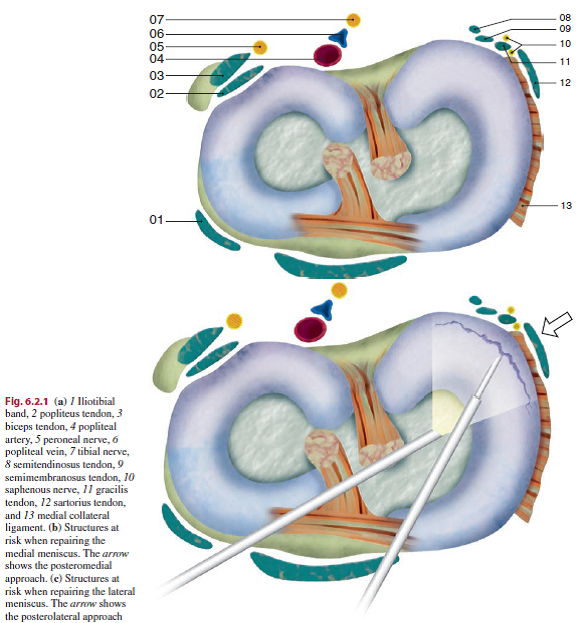Hybrid repairs afford reliable fixation while avoiding extensive tissue dissection and neurovascular injury. Position this specially designed adjustable drill guide and marking hook over the back of the tibia for reproducible meniscal root repair. Due to its poor blood supply and challenging tear patterns , repair of the torn meniscus can present quite a challenge.
The FiberStitch implant is an innovative all-inside meniscal repair system that replaces hard PEEK implants with soft suture sheaths. What is a medial meniscus repair? Purpose: To evaluate long-term of meniscal repair during arthroscopic ACL reconstruction. Materials and methods: patients who underwent meniscal repair during arthroscopic ACL.
The procedures were performed by senior surgeons. Specifically, this implant provides ergonomic handling and simplicity as it has a linear deployment mechanism. Then insert the first soft suture sheath anchor, back out, and insert the second anchor alongside the first. Jenkins JM(1), Hopper GP(2), Mackay GM(3).
Author information: (1)Department of Trauma and Orthopaedic Surgery, Glasgow Royal Infirmary, Glasgow, Scotland. College of Medical, Veterinary and Life Sciences, University of Glasgow, Glasgow, Scotland. Techniques of meniscus repair include using arthroscopically placed tacks or suturing the torn edges. Both procedures function by reapproximating the torn edges of the meniscus to allow them to heal in their proper position and not get caught in the knee causing the symptoms described above. These precision-crafted knives are “must-have” items.
Designs offered include the Banana Knife, Hook Knife, and Smilie Knife. A reusable handle also provides better gripping in wet environments. During this procedure, your doctor will remove the whole meniscus.

Meniscus repair is low-risk. Arthroscopic total meniscectomy. This technique makes it easy to shorten the gap strictly, smoothly and less invasively. Posterior meniscal root injury diminishes the ability of the meniscus to resist hoop stresses, which leads to increased joint contact pressure in the associated knee compartment. Two main repair techniques have been described: suture anchor fixation and sutures pulled through a tibial tunnel.
Commonly used techniques for meniscal repair include inside-out, outside-in, and all-inside techniques. Of these, the outside-in repair technique is ideal for anterior horn tears because it allows for adequate access to the anterior horn of the meniscus , provides a stable fixation construct, and avoids leaving prominent intra-articular material. Unsubscribe from sent med? Tears are noted by how they look, as well as where the tear occurs in the meniscus.
The decision by the surgeon to repair or remove is based primarily on the location of the meniscal tear. Twenty-six () of the meniscal repairs were performed as isolated procedures. Clinical failure was defined as repeat surgical intervention involving resection or revision repair.
When a repairable AL root tear is identifie a knotless suture anchor repair can be performed. Typically, meniscal root repairs are indicated for active patients with symptomatic extrusion of the meniscus and without advanced arthritis. If an athlete suffers a meniscal root tear, the three options for treatment include: non-operative rehabilitation, surgery to trim out the area of torn meniscus or surgery to repair (stitch together) the torn meniscus.

Root tears are repaired whenever possible based on their importance in limiting future knee arthritis. A study done by Kim et al showed that arthroscopic repair of medial meniscal root tears resulted in less progression toward arthritic degeneration as well as better clinical outcomes when compared to partial meniscectomy. Determination of which patients should be considered for meniscal root repair is dependent on a number of factors.
The outer one-third of the meniscus has a rich blood supply. A tear in this “red” zone may heal on its own, or can often be repaired with surgery. A longitudinal tear is an example of this kind of tear. Eighty-three meniscal repairs (in eighty-one patients) were identifie and follow-up data were obtained for seventy-five ().
The FAST-FIX ◊ 3System’s 360° actuation design provides improved control, enabling you to deploy implants in any hand position – vertically or horizontally on either side of the meniscus – with a fast, smooth, advancing motion. The meniscus helps to cushion the joint and keeps it stable.
No comments:
Post a Comment
Note: Only a member of this blog may post a comment.